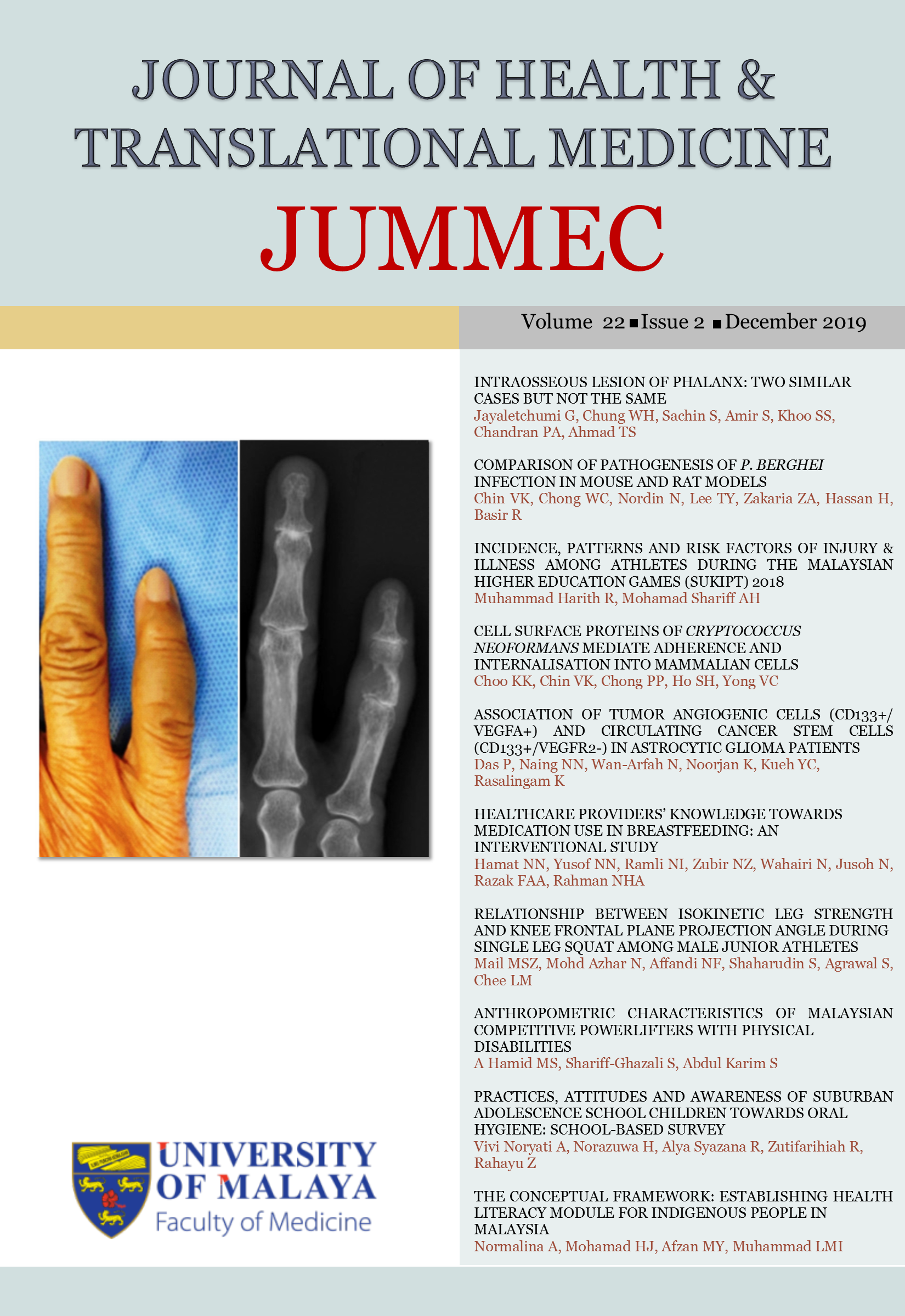COMPARISON OF PATHOGENESIS OF P. BERGHEI INFECTION IN MOUSE AND RAT MODELS
Received 2019-02-25; Accepted 2019-04-15; Published 2019-08-01
DOI:
https://doi.org/10.22452/jummec.vol22no2.2Abstract
Background: The cytokine cascade in the immunopathogenesis of malaria infection had been widely studied. However, their specific association with survival and severe infection remained obscure. Methods: The study investigated the cytokine profiles and histopathological features of malaria in the severe infection and survival models by using male ICR mice and male Sprague Dawley rats respectively. Results: The severe model, the infected ICR mice, exhibited a high parasitemia with 100% mortality after peak parasitemia at day 5 post-infection. The survival model, the infected Sprague Dawley rats, showed mild parasitemia with full recovery by day 14 of infection. Both severe and survival models showed similar histopathological severity during peak parasitemia. The severe model produced highly elevated levels of proinflammatory cytokines, TNF-α and IL-1α, and low levels of the anti-inflammatory cytokine, IL-4; while the survival model showed low levels of TNF-α and IL-1α with high levels of IL-4. Conclusion: There were differences in the pathogenesis of the severe and survival models of malaria infection. These could be a basis for immunotherapy of malaria in the future.
Downloads
Downloads
Published
Issue
Section
License
All authors agree that the article, if editorially accepted for publication, shall be licensed under the Creative Commons Attribution License 4.0 to allow others to freely access, copy and use research provided the author is correctly attributed, unless otherwise stated. All articles are available online without charge or other barriers to access. However, anyone wishing to reproduce large quantities of an article (250+) should inform the publisher. Any opinion expressed in the articles are those of the authors and do not reflect that of the University of Malaya, 50603 Kuala Lumpur, Malaysia.


